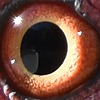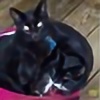HOME | DD
 TheBootesArtVoid — Downard Painted Doggo (Enclosure)
TheBootesArtVoid — Downard Painted Doggo (Enclosure)

#animal #animalphotography #animals #canine #canines #dog #dogphotography #dogs #natural #nature #naturephotography #photo #photography #photographyanimals #photographynature #photographyphoto #photos #wildlife #wildlifeart #wildlifephotography #wildlifeanimal #wildlifereferencephoto #thebootesartvoid
Published: 2022-12-22 07:30:28 +0000 UTC; Views: 2008; Favourites: 88; Downloads: 0
Redirect to original
Description
Species Name: African Wild Dog
Species Latin Name: Lycaon pictus
Also Known As: African Painted Dog, African Hunting Dog
Native To: Sub-Saharan Africa
Conservation Status: Endangered
Photo Taken At: Werribee Zoo
Size (length): 71-112cm (28.0 – 44.1 inches)
Size (Weight): 60-75cm (23.6 – 29.5 inches)
Weight: 18-36kg (39.7 – 79.4 pounds)
Lifespan: 10-11 years
Top Speed: 66kmh (41 miles)
Population Size: 6,600 individuals
Diet: Carnivore, scavenger
Lifestyle: Terrestial, cursorial, pursuit predator, pack hunters, altricial, nomadic, viviparous, territorial, apex predator, pack hunters
Group Name: Pack
Mating Behavior: Monogamy
Reproduction Season: April – July (Southern Africa)
Pregnancy Duration: 69-73 days
Births Per Pregnancy: 6-16 pups
Independent Age: 5 Weeks
Age Of Sexual Maturity: 12-18 months
Baby Name: Pup
Sub Species:
Cape Wild Dog (Lycaon pictus Pictus)
East African Wild Dog (Lycaon pictus Lupinus)
Somali Wild Dog (Lycaon pictus Somalicus)
Chadian Wild Dog (Lycaon pictus Sharicus)
West African Wild Dog (Lycaon pictus Manguensis)
Description:
The African Wild Dog is the largest canine that is indigenous to Africa. The colouration of their fur will vary depending on the region they are situated in, the colouration can vary from being entirely black with small white and yellow patches, or more brightly coloured with a mix of brown, black and white colours on their coat. Their coat of fur is entirely made up of stiff bristle-like hairs with no underfur, these hairs fall out as the animal ages with some older dogs ending up being entirely without fur. Their muzzles are usually black turning into more of a brown colour closer to their face and cheeks. They will feature a black line that extends up the forehead, once more it will turn into a brown colour at the back of the ears. The back of their head are either brown or yellow in colour. A white patch will occasionally be featured behind the forelegs, with some featuring entirely white forelegs, chests, and throats. Their tails are usually white at the tip, black in the middle, and brown at the base. Their coats can be asymmetrical in colouration with the left side having a different pattern when compared to their right side.
Diet:
These animals are social carnivores that will chase their prey constantly to the state of exhaustion making their target an easy kill. Even though these animals are quite small compared to other predators such as lions or leopards they have a rather high success rate in their hunts. They will chase their prey up to 66kmh (41 miles) for anywhere between 10 minutes to 60 minutes before their prey have fully exhausted themselves. Their hunting strategy will vary depending on the target. Herds of wildebeest will be rushed at so that they panic until one of the slower weaker ones in the herd can be isolated and targeted. Territorial antelopes on the other hand will be targeted by cutting off escape routes. Smaller prey will generally be taken down in less than 10 minutes where as larger prey will take up to half an hour to fully take down. These animals don't tend to fight over food, they will go so far as to regurgitate their food for other adults in their pack. The young pups capable of taking in solid food will be given priority of the food caught even before the dominant adults in the pack. Generally these animals will target prey that can range from 15 – 200kg (33 to 441 pounds) in size, though some studies have indicated they they can take down prey as large as 289kg (637 pounds) in size.
Whilst these animals are primarily pack hunters they will on occasion scavenge food instead. It has been noted that a pack of these dogs are enough to drive away other predators such as hyenas, leopards, cheetah's and even lions from carcasses. These animals will also go for animals that are caught in snares.
List of preferred prey for the African Wild Dog:
Greater Kudu (Tragelaphus strepsiceros) Conservation Status: Least concern
Thomson's Gazelle (Eudorcas thomsonii) Conservation Status: Least concern
Impala (Aepyceros melampus) Conservation Status: Least concern
Cape Bushbuck (Tragelaphus scriptus) Conservation Status: Least concern
Blue Wildebeest (Connochaetes taurinus) Conservation Status: Least Concern
Reedbuck (Redunca arundium, Redunca fulvorufula, Redunca redunca)
Kob (Kobus kob) Conservation Status: Least concern
Lechwe (Kobus leche); Also known as Red Lechwe or Southern Lechwe. Conservation Status: Near threatened
Springbok (Antidorcas marsupialis) Conservation Status: Least Concern
Dik-dik (Madoqua guntheri, Madoqua kirkii, Madoqua piacentinii, Madoqua saltiana)
These animals will also target a variety of hares, insects, and cane rats.
Behaviour:
African Wild Dogs are highly social animals that will consist of a pack of anywhere between 2 to 27 individuals and their pups. It has been noted that these animals can gather in groups of over 100 individuals however, this many in a single group is believed to be a temporary gathering in response to large seasonal migration of Springbok herds in Southern Africa. Both the males and females in these groups will have their own separate hierarchies. The female hierarchy will usually consist of the oldest female. The male hierarchy will also likely have the oldest male as the dominant male however, a younger male may at times take control of this position. It is recorded that there will be instances of groups of African Wild Dogs having older males who were formally pack leaders. These packs will differ from other species in that the females will leave a pack to roam and join another instead of the other way around. Packs will generally have more males in a pack than females as a result of this behaviour. Males will not usually be ejected from their pack, if they are ejected from their own pack it is unlikely that they will be able to join another unless the pack they join has a shortage of females.
The only noted form of vocalization these animals resort to is a type of 'sneezing' sound emitted via a short, sharp exhale through the nostrils. This behaviour is seen as a kind of voting mechanism. Individuals before a hunt will gather together to determine whether or not they will leave for a hunt by 'sneezing'. The vote will be deemed successful based on how many individuals participate in this behaviour. Typically if the dominant pair in the pack 'sneeze' first then their is a high likelihood that others will do the same.
African Wild Dogs are monogamous and it is usually the dominant pair who will have the rights to mate, these animals tend to mate for life. Populations in East Africa have no breeding season where as elsewhere the breeding season will generally be between the months of April to July. During this time the females that are in heat will be accompanied by a single male in order to keep other males at bay. African Wild Dogs produce the most cubs of any other canine, enough to potentially form an entirely new pack each year. Pregnancy lasts for around 69-73 days. After giving birth to as low as 6 pups or as many as 16 pups the mother will remain close to her pups in a den whilst the rest of the pack hunts. The mother will drive away any other members of the pack until the pups are weened off the mothers milk at 3 to 5 weeks of age when they can finally eat solid food. The pups will leave the den at about 3 weeks of their life, when they can take solid food they will eat regurgitated food from the rest of the pack. By the age of 8 to 10 weeks the pups will finally abandon the den altogether and will participate in the hunts with the other pack members. Both males and females reach sexual maturity by the age of 8-12 months.
Threats:
Even though it has been documented that African Wild Dogs are capable of driving away lions and hyenas from their kills, scavenging is a rare behaviour for these animals. Furthermore both lions and hyenas both pose the most serious threats in different ways for these animals. Lions are much larger and can easily kill an African Wild Dog although there are some cases where a lone African Wild Dog may successfully drive away a lion and still survive. Generally where lions are dominant in an area there are very little African Wild Dogs, conversely where the numbers of lions are suffering the African Wild Dog's will thrive. Where African Wild Dogs have been killed by a lion their bodies will not be consumed by the lions which indicate that their hostile relationship is based on mutual competition of resources rather than that of a predator/prey relationship.
Hyena's are a threat to these animals in a slightly different manner. whilst hyenas are also a threat due to a competition of resources they aren't much of a physical threat to African Wild Dogs like lions are. Hyenas will behave in a parasitic manner by following African Wild Dogs to scavenge and steal food from them. Usually a lone hyena will sneak up to one of the kills and steal a portion of meat unnoticed. Large eagles can also be a threat to the African Wild Dogs who will target the young pups of these species during the brief moments when they are left unprotected. Otherwise these animals are apex predators who will generally only lose fatally in a fight to a larger predators such as lions, the exception to this may include ambush predators such as the Nile Crocodile who may opportunistically prey on these animals when given the chance.
Conservation:
There have been attempts to rename this animal as 'The Painted Dog' to counter the negative connotations that may be associated to this species. It is likely that this re-branding if successful may assist with future conservation efforts such as fundraising, awareness raising, and other aspects. That said it appears that this has yet to really catch on as the name African Wild Dog is still widely used today.
Conservation groups such as the Painted Dog Conservation use many approaches to try to protect this animal. Conservationists use a catch and release program to place reflective and coloured collars in an effort to convince locals of how endangered these animals are with their low numbers and to prevent roadside collisions. Anti-poaching units will patrol to protect endangered animals from being hunted by poachers, they will also collect data and observe the animals whilst collecting any poaching snares they may find. The snare wire is given to local artists so that a variety of sculptures can be made, the sales of these snares assist with further conservation efforts. Conservationists have also set up rehab centers for injured or sick African Wild Dogs they may come across, other education and visitor centers have been set up by the Painted Dog Conservation group to spread awareness about these animals.
Further Reading (general information):
Wikipedia: en.wikipedia.org/wiki/African_…
World Wildlife: www.worldwildlife.org/species/…
Kidadl: kidadl.com/animal-facts/africa…
Animalia: animalia.bio/african-wild-dog
African Wild Dog: www.awf.org/wildlife-conservat…
Related content
Comments: 17

👍: 1 ⏩: 1

👍: 0 ⏩: 0

👍: 1 ⏩: 1

👍: 1 ⏩: 0

👍: 1 ⏩: 1

👍: 1 ⏩: 1

👍: 1 ⏩: 0

👍: 1 ⏩: 1

👍: 1 ⏩: 1

👍: 1 ⏩: 1

👍: 1 ⏩: 1

👍: 1 ⏩: 1

👍: 1 ⏩: 1

👍: 1 ⏩: 1

👍: 1 ⏩: 0

👍: 1 ⏩: 1

👍: 1 ⏩: 0


























